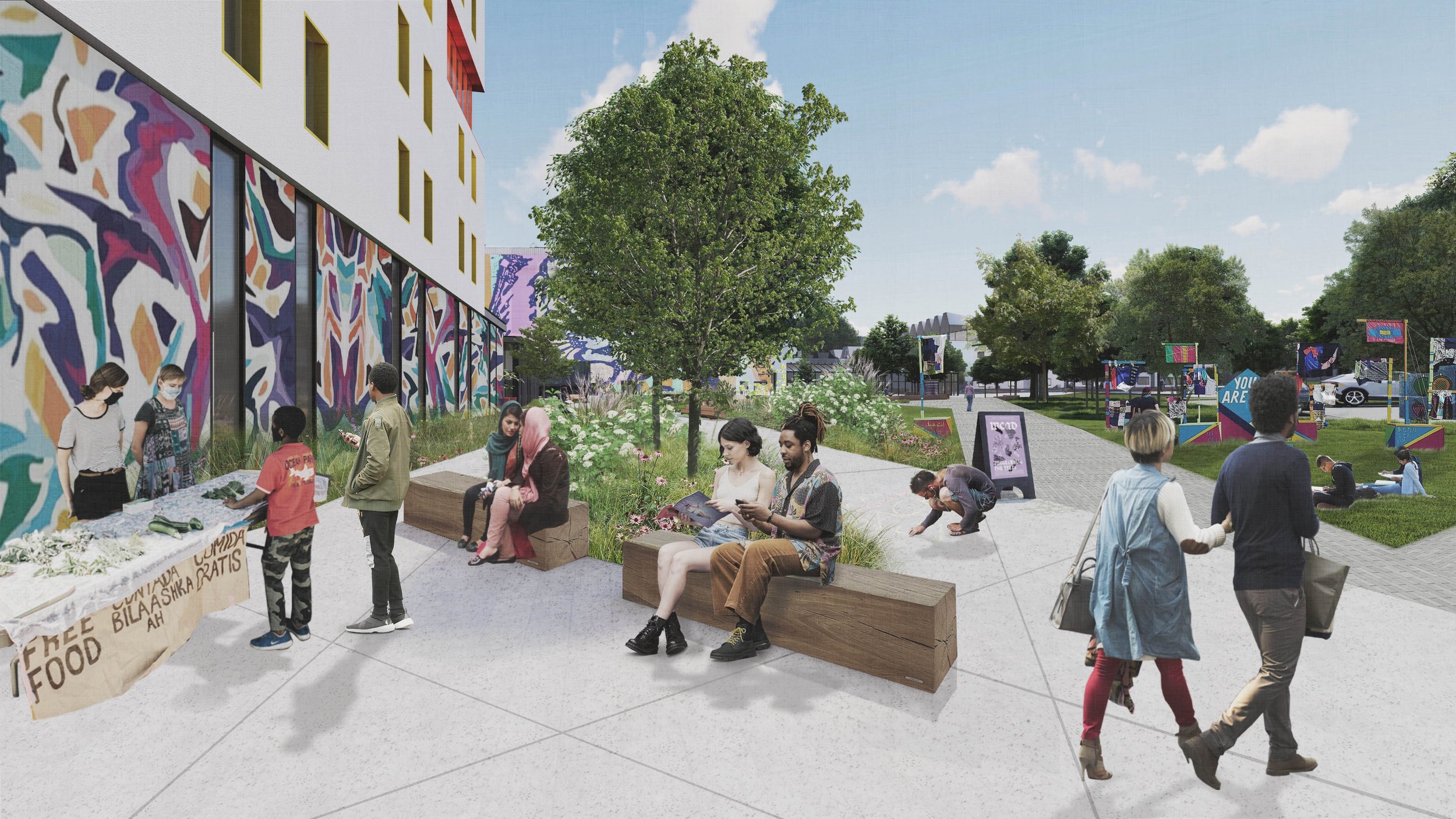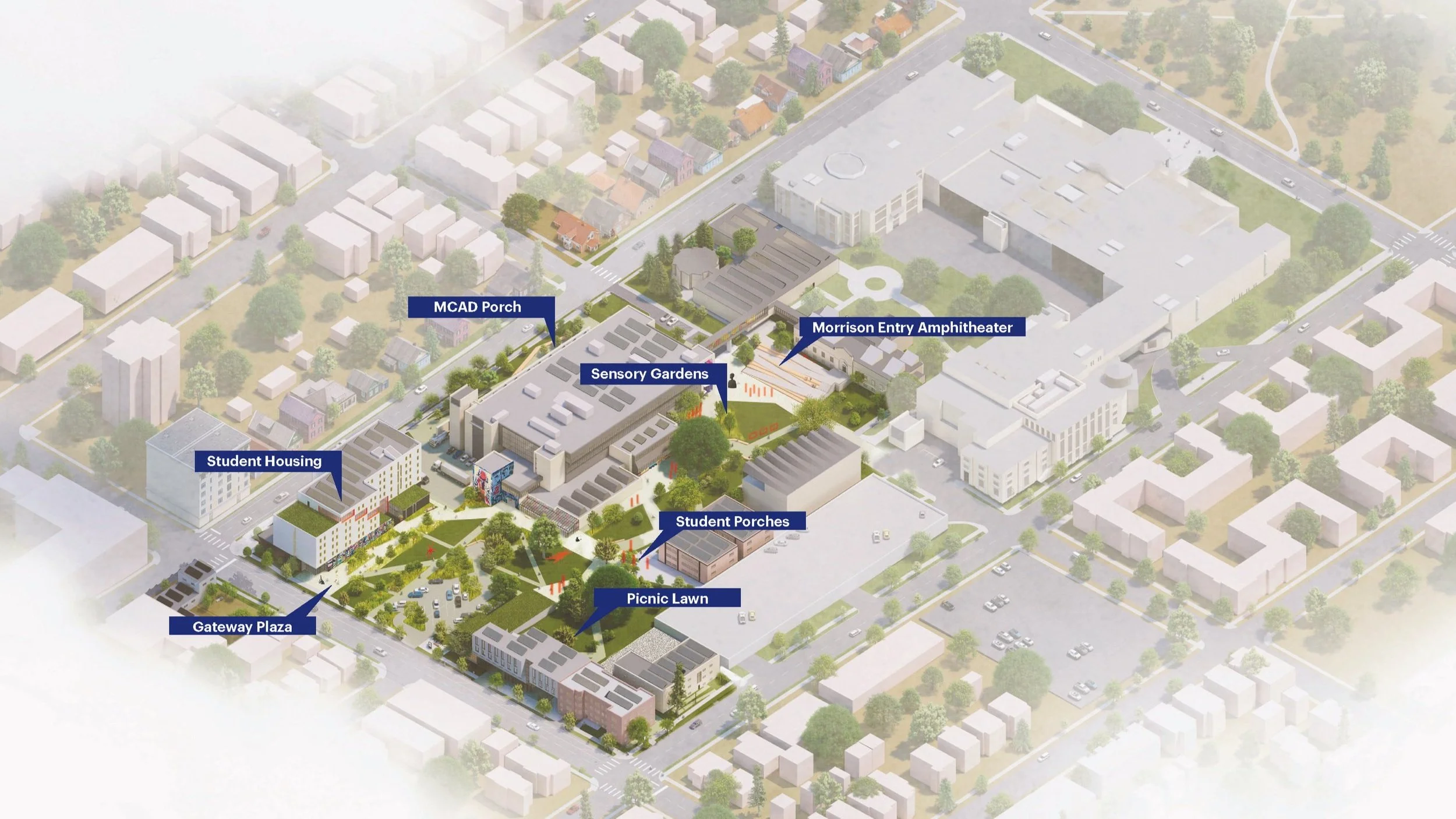MCAD CAMPUS PLAN + STUDENT HOUSING
An opportunity to model a new, more radically accessible college environment; one that can accommodate a growing and increasingly diverse student population.
Minneapolis, Minnesota
38 acres, 2021-2023
-
The Minneapolis College of Art and Design (MCAD) Campus Plan offers a guiding vision to provide a bold yet practical framework for future investment in the maturation of a world-class art and design college of exceptional distinction. First-and-foremost, the Plan is an opportunity to model a new, more radically accessible college environment; one that can accommodate a growing and increasingly diverse student population.
The Campus Plan prioritizes three spatial strategies: (1) deterritorializing space, (2) making more efficient use of space, (3) and building creative community. The planning process followed a purpose-built Liberatory Design Framework, which elevates five design principles: transformational environments, interconnectivity, anti-racist environments, radical accessibility, and experiential landscapes. The core design concept activates the campus edges to stitch MCAD with its urban context, while maintaining the core as a backyard for the college community.
-
Over the next decade, the Minneapolis College of Art and Design (MCAD) aims to become the leading art and design college in the country and a model for radical accessibility that accommodates a diverse and expanding student body. The Campus Plan outlines a comprehensive vision and framework for the college’s spatial transformation that is dynamic and adaptable to changing needs. Guided by a purpose-built Liberatory Design Framework, the Plan integrates five design principles aligned with MCAD’s Adaptive Strategic Plan: transformational environments, interconnectivity, anti-racist environments, radical accessibility, and experiential landscapes.
The Campus Plan effort involved a robust and diverse design team of architects, engineers, local engagement partners, and a range of experts for cost management, historic preservation, parking, and academic programming. The landscape architects led the design and planning of a bold yet practical framework for future investment in the campus grounds and co-facilitated community and stakeholder engagement.
-
The first phase of development in the Campus Plan creates affordable and accessible student housing within the Whittier Neighborhood. The development of a proposed 310-bed Student Housing Building on the southwest corner of the MCAD academic block will fill a critical gap in MCAD’s current housing capacity and unlock future opportunities for spatial transformation across the campus. The landscape of the Student Housing project supports interconnectivity, expanded opportunities for student learning and living outdoors, and freedom of access by connecting interior community-oriented programming with a primary pedestrian route that links E 26th Street with the heart of MCAD’s campus and academic core. The Gateway Plaza combines circulation with programming by shaping gathering spaces of various scales, providing a dynamic amenity for both MCAD and Whittier community at large.
PROJECT DETAILS
Location Minneapolis, Minnesota
Client Minneapolis College of Art and Design
Team TEN x TEN, MASS Design Group, Cuningham, Juxtaposition Arts, Buro Happold, Transsolar | KlimaEngineering
Area 38 acres
Status Campus Plan Adopted in 2022, Student Housing Planned for 2024







